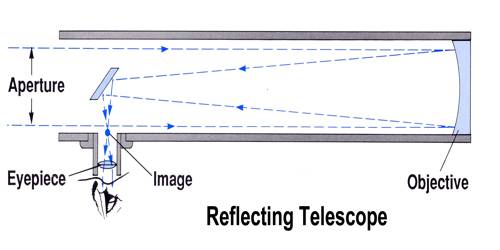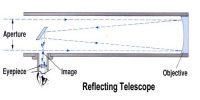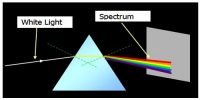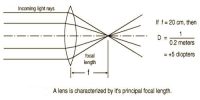Working principle and description of Reflecting Telescope
Reflecting Telescope is a telescope in which a mirror is used to collect and focus light. In 1663 scientist Gregory first invented this telescope. In 1668 Sir Isaac Newton first constructed the most currently used reflecting telescope.
In this telescope, a concave minor C of large focal length and wider aperture is placed at one end of a hollow tube and the other end remains open (Figure). From any point of the long distant object PQ the incoming rays of light are incident almost in parallel on the concave mirror C of the instrument and the rays after reflecting on the concave mirror C form an image pʹqʹ smaller than the size of the object, at the focal plane of the mirror. But before forming the image pʹqʹ the reflected rays from an image pith of the object in the side tube after reflecting in the plane mirror M.
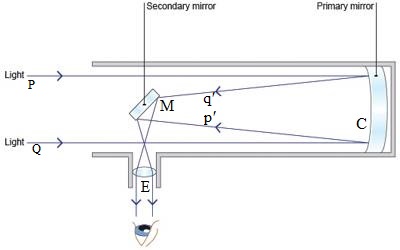
In order to form an image of distinct vision or for focusing the objective E is moved backward and forward and placed at such a place that a distinct magnified and erect image ‘qp’ is formed at the least distance of distinct vision when looked at the object through the lens.
For focusing on normal vision or focusing at infinity the convex lens is adjusted such a way as the image p1q1 is formed at the focal plane of the convex lens. In this, condition, light rays coming from p1q1 become parallel in the convex lens. As a result, a virtual, erect and magnified image at infinity is formed.
Now if the focal lengths of the concave mirror and the convex lens are respectively ƒ0 and ƒe then for focusing at least distance of distinct vision can be shown as,
magnification, m = ƒ0 (1/D + 1/ƒe)
Here D is the least distance of distinct vision.
For focusing on the normal vision or focusing at infinity it can be shown that,
Magnification, m = ƒ0 / ƒe.
